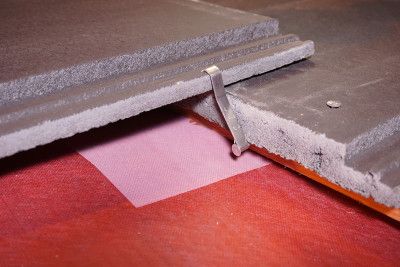 One of the many great things about British Standards for the construction industry is the way in which they drive and encourage improvements and innovation in products and services. Standards are ‘performance’ based which means that they do not dictate how a product should be made or what it should look like, but simply what it should do; i.e what level of performance it should achieve, leaving everything else up to the designer and manufacturer. This allows designers complete freedom to innovate, whilst knowing what level of performance to achieve or exceed.
One of the many great things about British Standards for the construction industry is the way in which they drive and encourage improvements and innovation in products and services. Standards are ‘performance’ based which means that they do not dictate how a product should be made or what it should look like, but simply what it should do; i.e what level of performance it should achieve, leaving everything else up to the designer and manufacturer. This allows designers complete freedom to innovate, whilst knowing what level of performance to achieve or exceed.
A good example of this is the way changes to tile fixing requirements in the 2014 edition of BS 5534 have driven innovation in fixing products such as tile clips. This latest Standard requires a greater level of tile fixing as it takes into account higher wind loadings. It also sets a minimum default level that all tiles on a roof must be fixed. This all means that the need for tile clips has significantly increased.
The cost to the roofer to clip tiles when installing a roof can be significantly greater than simply nailing the tiles because of the extra time, labour and cost of the clips. Therefore, roofers are keen to reduce costs and manufacturers are equally keen to improve clip design to make them cheaper, faster and easier to install, whilst improving performance; i.e durability, reliability and greater resistance against wind uplift.
In the UK, the tile manufacturers lead the way in clip design and, of course, they are designing clips for use with their own roof tiles. Generally, most tile clips secure the tile by hooking over the tile interlock, but as anyone who uses a variety of manufacturers’ tiles will know, each tile manufacturer has their own design of interlocks. Therefore, it is very important to use the clip that is completely compatible with the particular tile. Otherwise, the connection between clip and tile will not be as effective as it should be.
Designs and materials
Tile clips come in a variety of designs and materials; aluminium, steel, other non-ferrous metals and even plastics such as polycarbonate. They not only need to be of sufficient strength and reliability, but they must not interfere with the fit or performance of the tile. Some clips are secured by nailing into the tile batten, some clips are made from wire such that the clip itself is driven into the tile batten and there are clips that can hook underneath or around the tile batten.
Roof tile manufacturers base their fixing specifications on wind uplift resistance data calculated in accordance with the clip test method detailed in Annex I of BS 5534: 2014 using their own clips. The test method measures not only the strength of the clip (i.e its ability to restrain the roof tile when subjected to an uplift load) but also its mode of failure and reliability. For example, several tests are carried out and the results are compared. Widely varying results indicate a clip mechanism that may not be too reliable. For example, one test may indicate a very strong resistance, but then in the next test the clip may disengage from the tile, giving a very weak result.
This means that if a tile clip other than that specified by the tile manufacturer is used, the resulting fixing specification may not adequately resist the wind loads possible at the location in question and consequently a finished roof that does not comply with the requirements of BS 5534: 2014.
Increasingly, and particularly in new build, housing enforcement agencies such as the NHBC require evidence that a tile manufacturer’s fixing specification has been used and that includes the use of the correctly specified tile clips. Failure to follow this guidance could result in the roof having to be stripped and re-tiled using the correct tile clips.
In conclusion
– Always use the clips approved by the tile manufacturer. The tile manufacturer will issue fixing specifications based on the test values of their particular clips.
– The consequences of not using the correct clips can mean a roof that does not comply with British Standards, is not guaranteed by the manufacturer nor covered by building insurance.
– Use of tile manufacturer tile clips ensures that the clips used have the necessary quality and durability when exposed on a roof in the UK climate, which may not always be the case if clips from other sources are used.



